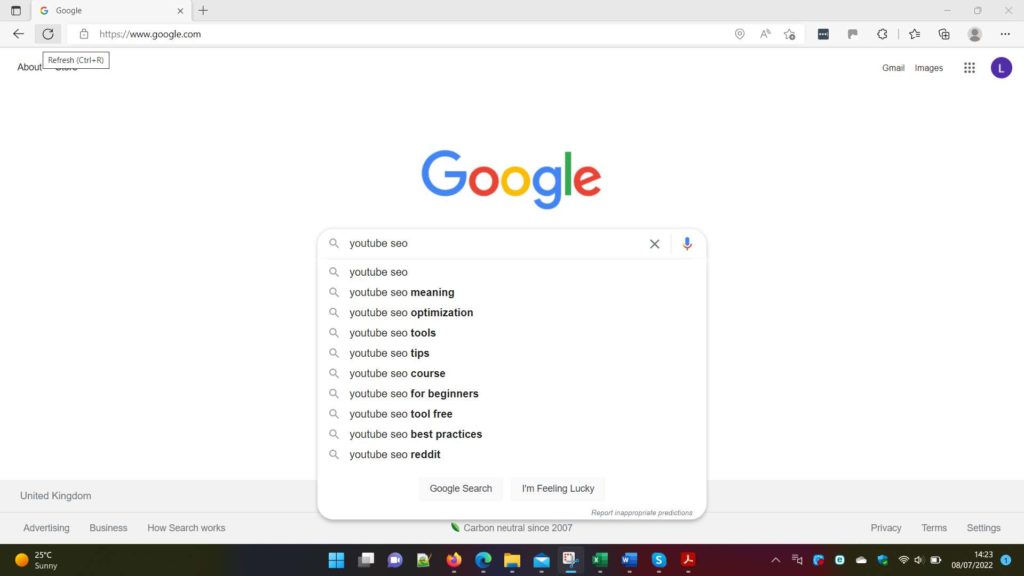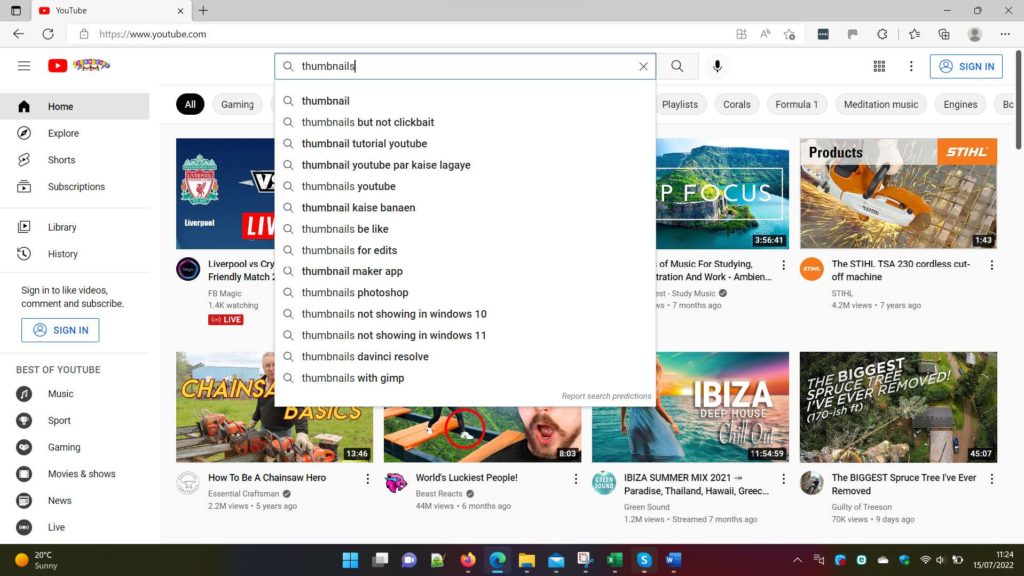It’s obvious that every brand will have an effective SEO strategy for their website, we believe the same needs to be true for YouTube.
YouTube is the world’s second largest search engine behind Google. With hundreds of hours of video being posted to YouTube every minute, having the right SEO strategy can help your content stand out from the crowd.
If you’ve spent time and money creating amazing, relevant, interesting videos but they’re not getting discovered or watched on YouTube, we suggest you think again about your YouTube SEO strategy.
We believe SEO starts before you’ve even made the video. If the creative relates to something audiences are actually looking for, it will be found. Therefore, having SEO embedded within the creative process helps enormously post-production, getting that video organically discovered and watched.
So, whether you’re getting started on YouTube or are looking to breathe life (and views) into your existing video or future content, we suggest you consider these 6 key tips to maximise your YouTube SEO:
1. Research the keywords
Performing a simple keyword search for your website SEO strategy is the first thing every marketeer knows. But the same is also true for your YouTube SEO strategy. Knowing your audience’s keyword search terms is the cornerstone of your YouTube SEO strategy and can make the difference to where you’re ranked and who gets to see your videos.
So, what are keywords? Keywords are the words your audience use to search for your videos. By knowing these keywords, you can ensure your videos get seen above other, similar videos.
There are several ways you can research your keywords. You can use websites that give you lists of keywords and the search volumes. Here are a number of that we like:
• TubeBuddy – www.tubebuddy.com
• Moz – https://moz.com/
• Semrush – www.semrush.com
• Ahrefs – https://ahrefs.com/
• Keyword Tool Dominator – https://www.keywordtooldominator.com/
• Keywords Everywhere – https://keywordseverywhere.com/
Or you can simply use Google or YouTube itself.


When you type your search query into Google or YouTube, a number of suggested search terms will appear. These are the keywords that are related to your query. Bingo – you have your list of keywords.
2. Optimise your video’s metadata
Metadata is your video’s title, tags and description. Ensuring these elements are optimised (i.e. – have relevant keywords that your target audience resonates with) will give your video the best possible chance of being served to your audience.
3. Optimise your thumbnails
90% of the best performing videos on YouTube have custom thumbnails, so it’s important each thumbnail that you create is distinctive, but instantly recognisable. Video thumbnails let viewers see a quick snapshot of your video as they’re browsing YouTube search results or recommended content.
We would recommend you upload a custom created thumbnail that allows your brand and video to be clearly identifiable. Keep an eye on your YouTube analytics as thumbnails are a great way to improve your CTR (click-through-rate). If you need any more persuading, even MrBeast (YouTube’s highest earning creator) optimises his thumbnails on an ongoing basis!
To learn more about how to optimise your thumbnails check out our video: www.navigatevideo.com/news/how-to-create-the-perfect-youtube-thumbnail
4. Add key moments (aka time stamps) and subtitles
Key moments or time stamps are a way to link to a specific moment in your video. Adding key moments to your description will provide a better experience for your viewer. They allow viewers to look at the part of the video they want to see, ensuring they don’t ‘bounce’ away from your video if they can’t find it. Time stamps also help with SEO. By adding in more specific search terms to your description it helps the algorithm find and serve up your video to audiences.
Creators can add subtitles and captions to their videos within YouTube Studio, which can also positively impact on SEO. But what is the difference? Captions are designed for viewers who cannot hear the audio in a video, while subtitles are designed for viewers who can hear, but do not understand the language being spoken in the video.
Top tip: always check autogenerated subtitles for mistakes or misspellings!
5. Add info cards and end screens
Simply put, info cards are a device that enable any YouTube creator to add an extra layer of interactivity to their videos. When the card pops up, it’s giving the viewers the option to click a link to other content (a product, a website or more effectively, another relevant video on your channel). These cards are an effective way to keep your audience engaged with your channel, providing them with interesting, and relevant content.
An end screen is a YouTube feature that appears in the last 5-20 seconds of a video. End screens are a fantastic tool to use within a video to help extend watch time on your channel as well as the user journey, by recommending similar content and driving viewers through to your website.
It is astonishing how many brands and creators do not use this simple mechanism. We believe end screens are essential to the success of your video’s discoverability and search capabilities. The moment a viewer finishes watching a video from your channel, the hunt for the next best video begins, or the viewer might even choose to exit YouTube altogether.
If you don’t know how to create your info cards and end screens check out these two great links that tell you how:
• https://support.google.com/youtube/answer/6388789?hl=en-GB
• https://support.google.com/youtube/answer/6140493?hl=en-GB&ref_topic=9257785
6. Optimise your channel
Here are a few of the quick wins you can make to your channel today:
a. Have a trailer that has an overview of your channel with relevant keywords in the description of the video
b. Use channel art
c. Have playlists to ensure the channel is easy to navigate
d. Fill out the About tab with relevant keywords from your initial search
e. Use both long form and short form video
If your content is innovative, interesting and relevant and you’ve followed the above steps to ensure the best chance of organically being found on YouTube, we believe you’re in the best possible position to have your video discovered and seen by your audience.
There are numerous ways to ensure your YouTube channel is optimised and the team at Navigate Video are here to talk through ways in which we can help. If you’re a brand or a creator, we’d love to chat.
Author: Stuart Stubbs, Navigate Video
Stuart founded Navigate Video in 2015 with the ultimate aim to support a business’ video process and to make their output more effective and efficient. He has over 20 years experience working in start-up environments, building client services and media teams. Navigate Video works with both creators, like ChefSteps and brands, such as Breville, AXA and Diageo.







